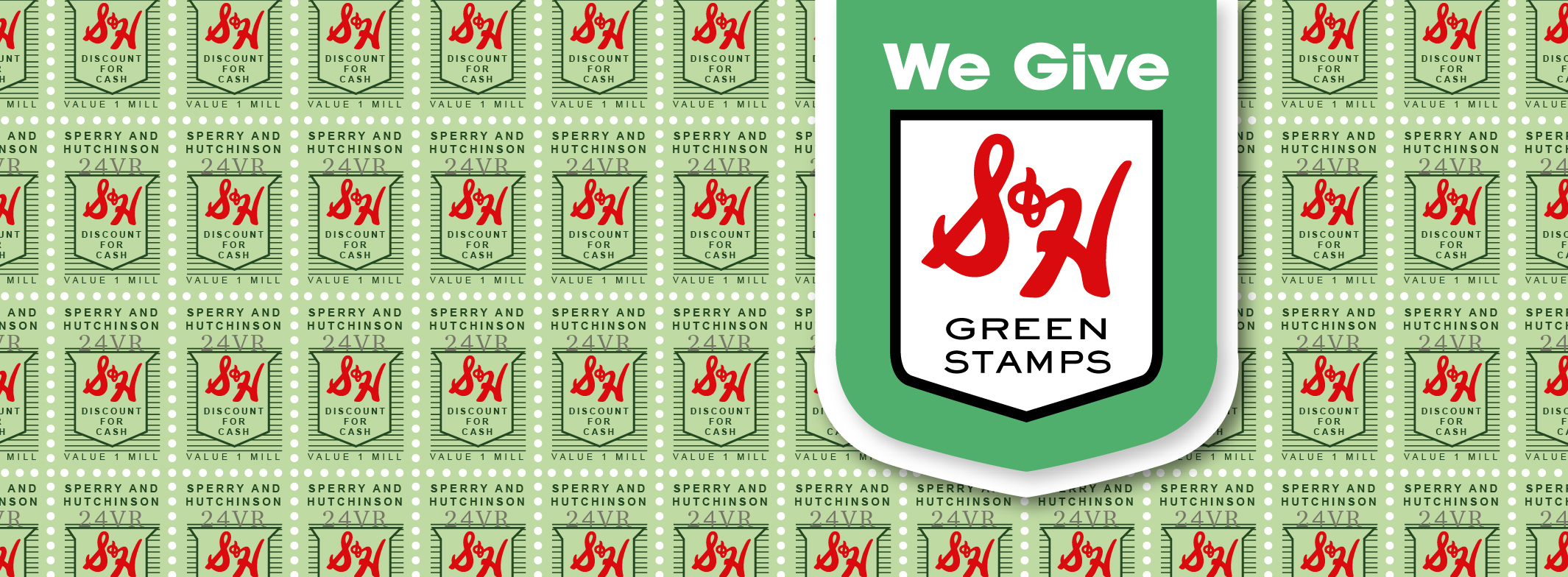News
Marketer Magazine: On The Record: Conducting Strong Interviews with the Media
How S&H Green Stamps Ushered in the Age of Rewards Programs
When one thinks of the history of consumer rewards programs (and who doesn’t?), the 1700s usually don’t spring to mind. But it was during this time that merchants gave out copper coins with purchases to entice customers to return and use them on their next shopping spree. And while giving away coins left a lot to be desired in the cost-effectiveness category, as an incentive in getting repeat business, it worked beautifully.
It wasn’t until 1896 that Thomas Sperry and Shelley Hutchinson not only improved on the concept but established one of the most successful customer rewards programs ever known.
Wisely avoiding the costly coin system, the Sperry & Hutchinson Company (S&H) created stamps to use for its program, and since the stamps were green (an obvious choice because it’s associated with money and prosperity), they were cleverly dubbed S&H Green Stamps.
(If you’re reading this and are from the UK, you’re probably really confused right now. Don’t worry, you aren't crazy. When S&H expanded across the pond in the 1960s, an established competitor already had a trademark on green stamps, so with that option off the table, S&H opted for an in-your-face shade of pink.)
S&H sold its stamps to retail stores that would then give them out to customers as an incentive to shop at their store over a competitor’s or to buy more of a particular product. Customers would collect the stamps, which ranged in value from one to 50 points, and place them in a book provided free by S&H. Once full, the book was worth 1,200 points and could be redeemed for just about anything, either at a local redemption center or through S&H’s massive 178-page mail-order catalog.
At the height of its success in the 1960s and ‘70s, S&H sold three times more stamps than the U.S. post office. S&H’s rewards model became so popular other companies jumped on the bandwagon. However, some of these companies were financially unstable, and when they inevitably closed, people were left with books full of painstakingly collected and completely worthless stamps. One example was in 1905, when Benedict & MacFarlane (who issued blue stamps) went bankrupt. Based on what we’ve learned from recent Obligatory Agency Newsletters about the impact of color on marketing, we can easily speculate that blue stamps gave people the blues, thus contributing to their downfall.
Unfortunately, Benedict & MacFarlane underestimated how irate customers would become and how much damage furious women could inflict. Because what followed was such a disaster it made it into the New York Times with the dramatic headline “Women Renew Descent Upon Benedict & MacFarlane.”
Think modern-day Black Friday in the prim and proper era of the early 1900s and you’ve got the right idea. The fiasco was described as a “near-riot of excited women,” fighting over everything from kitchen supplies to fishing poles. When police were dispatched to control the crowd, they returned with scratches, ripped uniforms and “severely injured” dignity. One officer even reported that he was yelled at by a “wild-eyed man” because his wife had spent all their savings buying stuff she didn’t want so she gets could enough stamps to redeem them for a grand piano. Alas, a not-so-grand plan — and marriage — ruined over a tapped-out rewards program.
Early rewards programs like S&H’s were appealing because they required little effort on the consumer’s part. But to today’s customers, what was once considered effortless would now be viewed as a time-consuming hassle.
Technology has instilled in us an expectation of instant gratification. So, for any rewards program to be successful, it needs to be quick and easy in every way, from sign up to redemption. It must fit seamlessly into the customer’s life — or better yet — their pocket.
Apple’s 2009 slogan, “There’s an app for that,” is truer than ever. Smoothie King retired its stamp cards, replacing them with the Smoothie King Rewards mobile app. Starbucks has an app that not only collects rewards points, but also allows customers to pay for their order. Albertsons Monopoly game is one of the few rewards programs that still closely resembles S&H’s Green Stamps model. It takes a long time to collect the game pieces, and it’s difficult to win anything of value, which is probably why you’ll see Albertsons’ customers receive game pieces from the cashier only to pass them down the checkout line until someone reluctantly decides to take them.
Finally, while S&H may be the “granddaddy” of all rewards programs, after 122 years it’s still keeping up with the times. Its Green Stamps system has been converted into electronic “Greenpoints,” so if you’ve been hoarding some old-school Green Stamps, you’re in luck! Kind of. You can still redeem them, but there are some drawbacks — you only get one point per every two Green Stamps, you must mail in a minimum of 60 full stamp books and you have to include a notarized letter that states the total number of stamps. So, between the shipping and notary costs (not to mention the sheer amount of effort involved), that $25 Sephora gift card you were so excited about starts to look a lot less appealing.
